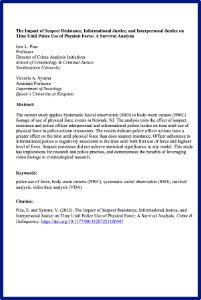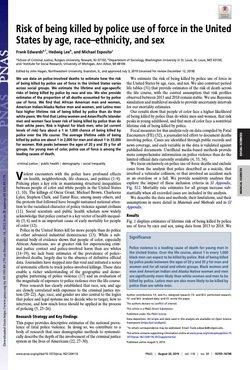.By Alon Steinberg , Dhilan Patel , Amanda Frugoli
Introduction: Prone restraint by law enforcement has come under scrutiny due to its association with in-custody deaths and subsequent civil litigation. The true incidence, risk factors, and physiological mechanisms contributing to these fatalities remain poorly understood. This study aims to assess prone restraint-related death occurrences and identify associated risk factors by analyzing legal case records.
Methods: This retrospective study examined United States legal records from the National Legal Database, LexisNexis, covering 2010 to 2019. Cases were identified using the MeSH term "prone restraint cardiac arrest." Data extracted included demographic and case-specific variables such as age, gender, body mass index (BMI), duration of prone restraint, application of additional body weight, race, use of a conducted electrical weapon (CEW), presence of body camera footage, reports of excited delirium, drug intoxication, settlement amounts, and documented statements of "I can't breathe."
Results: A total of 229 cases met the inclusion criteria for analysis. The majority of subjects (98 %) were male, with an average age at death of 37 years. Among cases with available data, 38 % were African American, 33 % had obesity, and 64 % involved recreational stimulant drug use. In 58 % of cases, death occurred after one to 5 min of prone restraint. Additional body weight was applied in 80 % of cases, while CEWs were used in 39 %. Excited delirium was reported in 31 % of cases. More than 20 % of individuals were recorded saying, "I can't breathe." The average reported settlement in resolved cases was $2.5 million.
Conclusion: This study represents the largest case series of 229 reported prone restraint-related deaths to be reported in the medical literature, yet the true incidence remains uncertain. Further research is essential to better understand the prevalence, contributing risk factors, and potential mitigation strategies. Collaboration among the medical and forensic communities, law enforcement agencies, and policymakers is critical to accurately assess the scope of this issue and implement measures to reduce fatalities associated with prone restraint.
J Forensic Leg Med, 2025 May:112:102862.
doi: 10.1016/j.jflm.2025.102862. Epub 2025 Mar 31





















